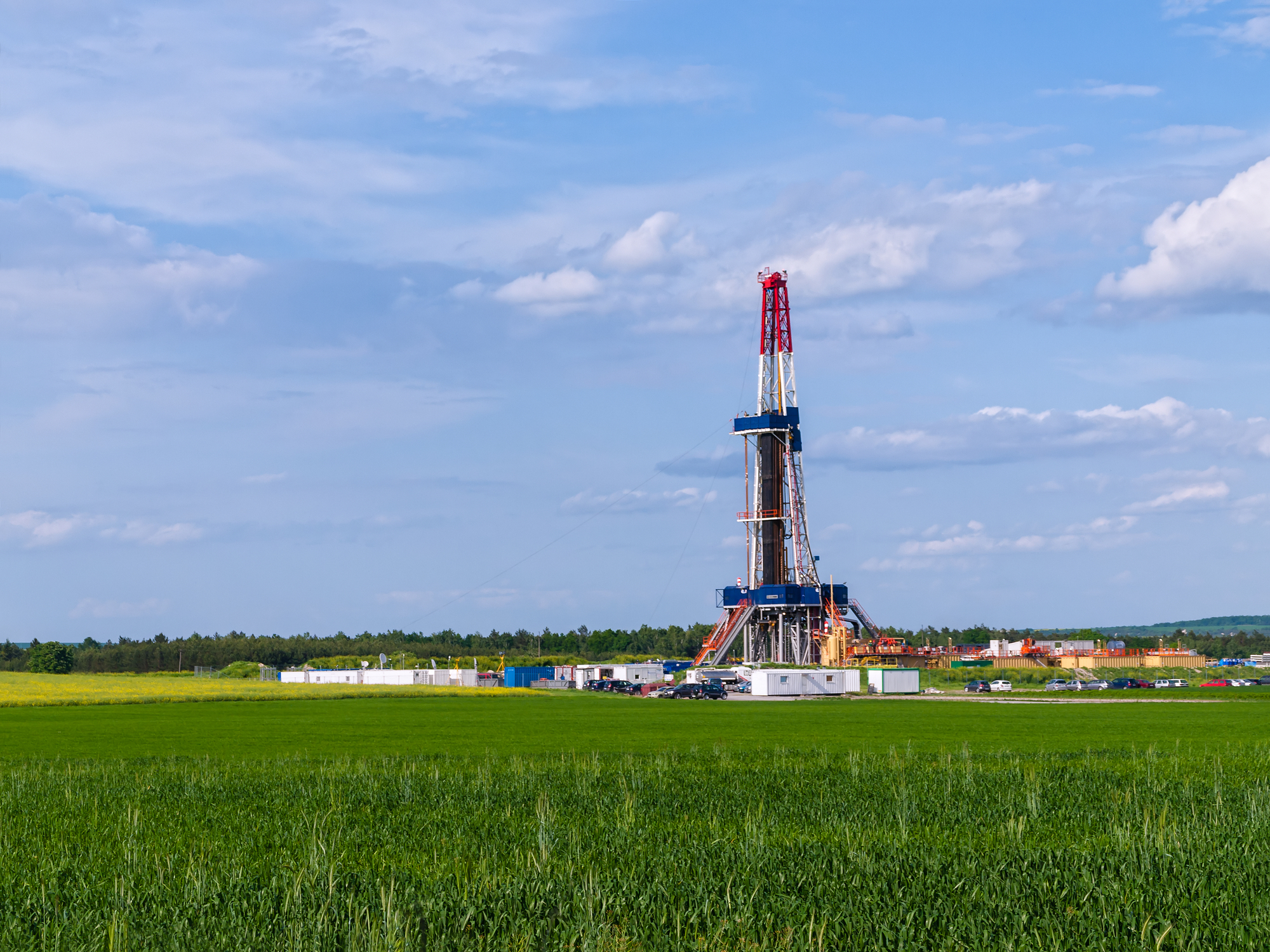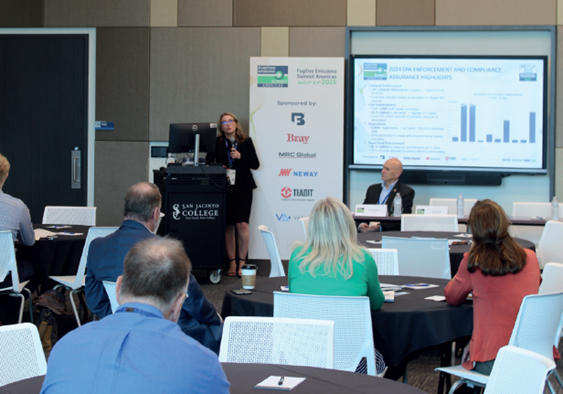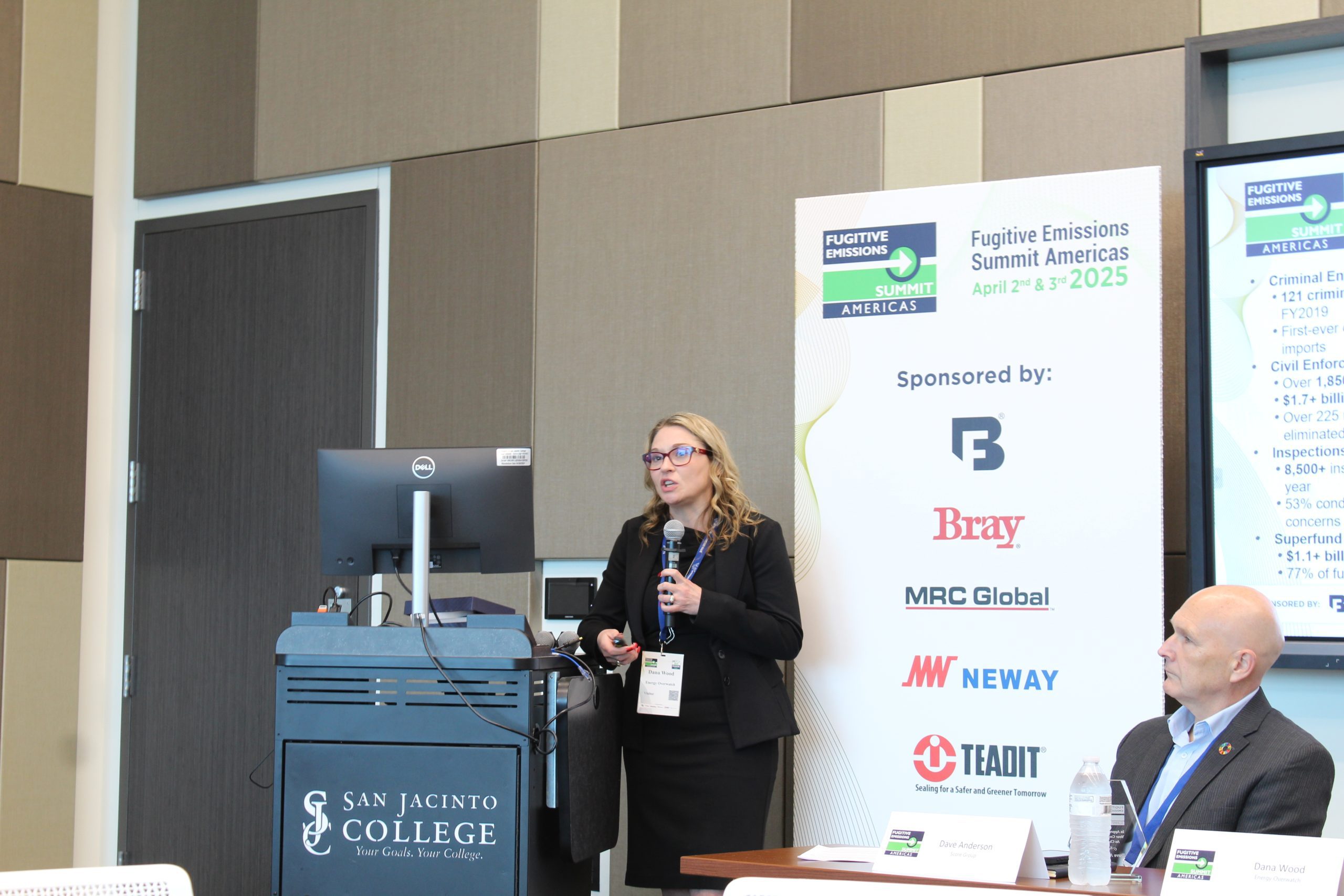Dana Wood, VP of Environmental Consulting, Compliance and SaaS at Energy Overwatch LLC, was the keynote speaker at KCI’s Fugitive Emissions Summit Americas 2025 earlier this year. Her presentation, “Changing Environmental Risk Management – Moving from ‘Find and Fix’ to ‘Prevent and Eliminate’ emphasized how essential it is for companies in the oil and gas sector to suppress fugitive emissions. In a subsequent interview, Wood elaborated the importance of sourcing the cause of emissions over the long-term and how oil and gas companies can be proactive with the continuous changes legislated by the U.S. Administrations.
By Steve Fennell
U.S. environmental regulations in the oil and gas sector frequently evolve. What remains constant, however, is the necessity for companies to meet continuous compliance and prevent fugitive emissions.

Navigating ever-changing regulations is no easy feat. In oil and gas, there is a continuous influx of new and expanded state and federal regulations. Just as one regulation is addressed, another emerges. This makes it difficult to focus on anything beyond compliance – not to mention managing the swifter-than-desired pace of regulatory change.
For Dana Wood, this is familiar territory. As the Vice President of Environmental Consulting, Compliance and SaaS at Energy Overwatch LLC, in Houston, Texas, Wood realizes the challenges. She also recognizes how companies and support industries in the oil and gas sector can be proactive in this current climate.
Wood, a professional environmental engineer (PE), is an industry expert with more than 25 years of environmental experience (17 of those years were in the oil and gas sector). She has an extensive background in environmental management, air quality, climate change strategies, permitting compliance, and regulatory advocacy. Wood also has worked for a number of oil and gas leaders.
Her role at Energy Overwatch includes air quality consulting and ensuring the field service teams and products are compliant with regulations. In addition, she manages software development and its support teams.
“Our field services teams conduct leak detection, quantification, facility inspections, and assisting with audit preparations,” says Wood. “The majority of our software is to help support offshore safety and environmental compliance, but we also have the leak detection and repair software that can be used onshore as well. We also offer consulting services for air quality, compliance assessments, and environmental management.”
Wood elaborated that some of the consulting she conducts is for air quality compliance for upstream oil and gas companies and new technologies.
Current Emission Regulation Challenges
Regulatory changes in 2023 and 2024, combined with the new U.S. administration, may lead to further shifts on emissions regulations and compliance. As a result, companies and the industry can potentially face increased pressure.
“The challenges are on the environmental side, and we help companies weigh what they are continuing to implement and what they should hold off on,” says Wood. “There’s also concern about investing, only for regulations and compliance to change again. We help companies navigate the options and advise what is worth doing and what can protect them from current regulations, future regulations, and enforcement.”
Regardless of the nature of the U.S. administrations and ensuing compliance, Wood explained the states can supersede Federal rules. New Mexico, Colorado, Wyoming, Pennsylvania, and Ohio all typically set more stringent rules than EPA. In turn, companies need to comply with both U.S. State and Federal rulings.
“It’s important to get ahead of the rules as much as possible, says Wood. “I often suggest implementing programs to eliminate leaks or other emission concerns from an engineering and preventative maintenance perspective rather than the typical find-and-fix-it programs.”

Shared Knowledge and Best Practices
Wood shared her consulting and environmental knowledge in oil and gas during her keynote presentation, Changing Environmental Risk Management: “Moving from “Find and Fix” to “Prevent and Eliminate”, which addressed ways to eliminate fugitive emissions and readily meet ongoing compliance.
Speaking before industry leaders, energy professionals, and regulators, Wood covered several topics. These included how companies can prevent emissions-related failures (and from recurring); practise-improved preventative maintenance; facility redesigns (to reduce environmental incidents such as tank leaks, unlit flares, and spills); utilize root cause analysis; and capture and leverage essential data to eliminate the problem altogether.
Find Root Causes for Proper Elimination
“Finding and fixing” are the first critical steps of this model, but equally important is utilizing root cause analysis to identify the sources of fugitive emissions. A lengthy, complex analysis is not necessary, but Wood emphasized, “Data without context is pretext.” In other words, data has no value unless it is properly understood and applied.

Effective data handling—understanding, collecting, and managing it—can be as straightforward as applying the “5 Whys” technique, repeatedly asking “why?” until the root cause is uncovered. Once identified, bring teams together from operations, maintenance, engineering, and environmental departments to effectively find the root cause(s), determine the appropriate response, and implement the solution.
Wood commented that it is common for companies to collect the wrong data or fail to trend their data correctly. It has, however, been her experience that the model is effective with positive results.
For instance, during her experience with Marathon Oil Company, Wood and her team achieved a 66% reduction in total facility leak rates, reduced tank leaks to 88% in Oklahoma and 66% in the Permian Basin.
Further success included reducing unlit flares by 38% in Oklahoma and an average of 11 per month in the Permian Basin. This resulted in the company having the second-lowest number of unlit flares in the basin, as reported by The Environmental Partnership.
While these are just a few examples, she stresses that companies in the oil and gas sector need to be focused on controlling emissions now more than ever.
“Companies in oil and gas should move to prevention and eliminate problems with root cause analysis as it truly addresses the issues versus a temporary fix or putting “band aid on it,” says Wood. “Otherwise, they will just be using more resources and spending more money to repeat the same work. By addressing the root cause there is one leak and one repair, saving time for the maintenance teams, money on repairs, and most importantly reducing emissions.”



